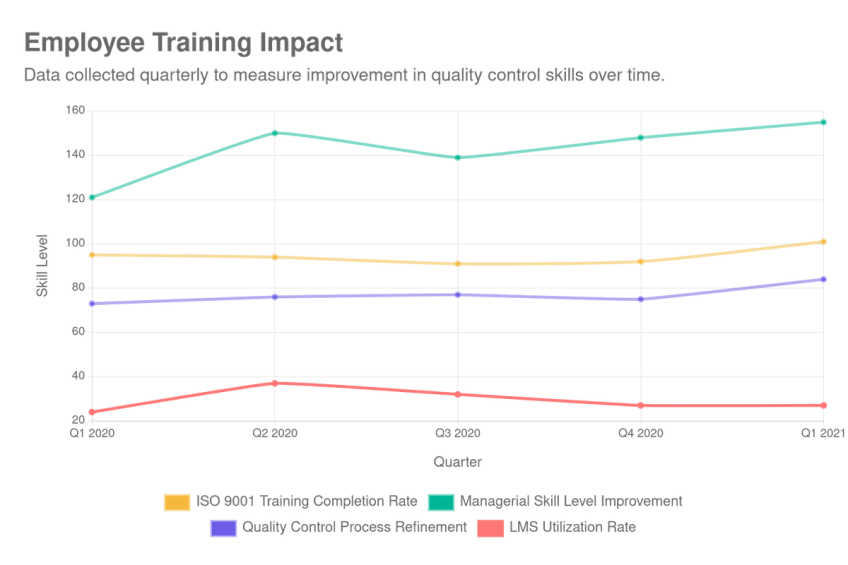The Key Role of Employee Training in Ensuring Quality Standards

In the bustling world of business, the true backbone of maintaining impeccable service and product excellence is often found in the hands of well-trained employees. As corporations and small enterprises alike strive to uphold the highest quality standards, the role of employee training emerges as a pivotal factor. This comprehensive exploration sheds light on how nurturing a culture of continuous learning draws a direct line to ensuring quality at every level of operation.
The Foundation of Quality: Comprehensive Employee Training
Diving deep into the world of quality assurance, it's evident that well-instructed employees are the first line of defense against the pitfalls of non-compliance and quality degradation. A robust training program focuses on imbuing staff with the critical skills and knowledge necessary to perform their duties to the best of their abilities. It's not just about learning the ropes; it's about weaving those ropes into a safety net that guards against errors and oversights.
- Risk Management: Understanding the potential risks in processes and knowing how to mitigate them ensures operational smoothness.
- Procedure Adherence: Employees versed in the intricacies of procedures and standards are less likely to veer off course.
- Quality Control Techniques: Training in these techniques empowers workers to identify and rectify quality issues promptly. This holistic approach to training is akin to sculpting an army of quality guardians, each equipped with the tools and insight to uphold standards like second nature.
Chart: Employee Training Impact, Data collected quarterly to measure improvement in quality control skills over time.

Setting the Bar: Benchmarking Quality Through Training
Undoubtedly, the landscape of quality standards is often a maze of expectations and benchmarks. Navigating this maze requires more than just a map; it requires a keen understanding of what excellence looks like in action. By setting clear, attainable quality benchmarks during training sessions, businesses can establish a common goal for all team members, fostering a culture of excellence and shared responsibility. Implementing these benchmarks, however, is a journey in itself. Here’s a quick guide to ensure you’re on the right path:
- Identify Key Quality Metrics: Start by pinpointing exactly what quality means for your business and your customers.
- Develop Targeted Training Programs: Tailor your training modules to address these metrics directly, with practical exercises and real-world scenarios.
- Assess and Iterate: Regularly review employee performance against these benchmarks and adjust training materials as necessary to address any gaps. Such targeted training not only crystallizes what quality means but also engraves it into the daily routines and mindsets of the workforce.
Continuous Improvement: The Lifeblood of Quality Assurance
In the realm of quality maintenance, stagnation is the enemy. Ensuring quality is not a one-and-done affair; it requires the nourishment of ongoing training and development programs. Encouraging a culture of continuous improvement keeps employees not just in sync with current standards but also ahead of the curve. Imagine a scenario in a leading tech company, where annual hackathons and continuous training sessions on the latest software development practices are the norms. One such event led to the redesign of a major application, drastically reducing its loading time by 40%. This initiative not only elevated the user experience but also served as a testament to the direct impact of continuous education on product quality. Our business thrives on this philosophy, consistently refining our training methodologies and content to ensure that all team members, irrespective of their roles, are on the frontline of quality standards. By investing in our people, we’re not just ensuring quality; we’re building a legacy of excellence.
Empowering Teams to Excel
The connection between comprehensive employee training and the upholding of quality standards is undeniable. Drawing on real-world examples, it's clear that when teams are empowered with the knowledge and skills needed to excel, they don't just meet quality standards; they redefine them. Consider the inspiring journey of a humble manufacturing unit that morphed into a benchmark of quality in its sector. By prioritizing employee training, focusing on practical skills application, and fostering an environment where feedback and innovation were encouraged, they saw a dramatic reduction in production errors and a significant leap in customer satisfaction rates. This transformation wasn't just a win for the business but a game-changer for the industry at large, setting new standards for what's achievable with the right focus on quality through training. In conclusion, as businesses navigate the complex dynamics of market demands and quality expectations, the role of comprehensive employee training in ensuring and elevating quality standards cannot be overstated. By fostering a culture of continuous learning, setting clear quality benchmarks, and embracing continuous improvement, companies can not only meet but exceed the expectations laid before them, carving a niche of excellence in their respective domains. Remember, in the pursuit of quality, every step taken to enrich the knowledge and skills of your team is a step towards securing a legacy of excellence.
Disclaimer: This article contains charts and insights informed by data references from www.linkedin.com, www.td.org, www.teachfloor.com. They are not direct representations but are based on our interpretations and analysis. While we've made every effort to ensure accuracy, there may be occasional discrepancies. Please use this information judiciously.